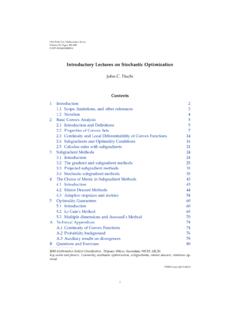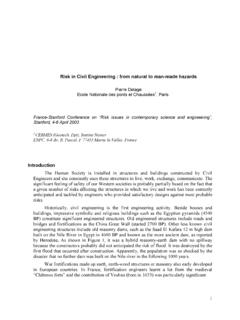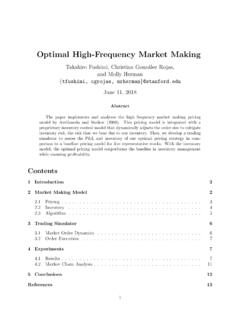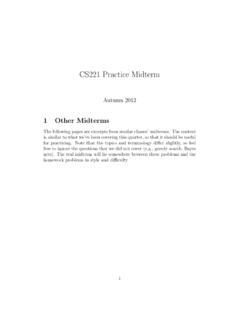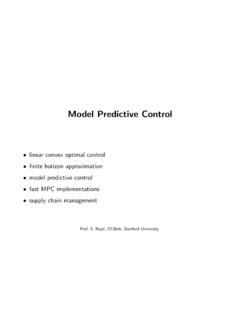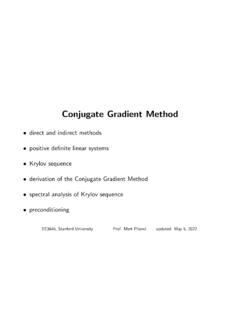Transcription of PHYSICS 430 Lecture Notes on Quantum Mechanics
1 (C) ,thephotoelectriceffect, :the double-slit , wave , <x>andUncertainty , , zerouncertainty ; , , ,resonance, ; ,Symmetry, , ; , ; ,Fermions, , ,harmonic,and sudden nearlyclassical ,squarewell, paradox .Fasterthanlight?Bell s guidingwaves . consistenthistories seffect, , :Chapters19and20remaintobewritten, , ,itwasdiscoveredthatthelawsofmotionformu latedbyGalileo,Newton,Lagrange,Hamilton, Maxwell,andmanyothers,wereinadequatetoex plainawiderangeofphenomenainvolvingelect rons,atoms, ,anewtheory(togetherwithanewlawofmotion) ,anditisnowthebasicframeworkforunderstan dingatomic,nuclear,andsubnuclearphysics, aswellascondensed- matter (or solid -state ) (duetoGalileo,Newton.)
2 , ,whoseformulationbegins(butdoesnotend!)w ithNewton slawF= ,F=ma, ,orperhapsafewseconds, ,asafunctionoftime,asx(t); ,thenanytrajectoryhastheformofaparabola( inauniformgravitationalfield,neglectinga irresistance), ,ifwerequirethatthebaseballreturnstoyour handexactly tsecondsafterleavingyourhand, ,butwewouldliketodevelopamethodwhichcanb eappliedtoaparticlemovinginanypotentialf ieldV(x).SoletusbeginwithNewton slawF=ma,whichisactuallyasecond-orderdif ferentialequationmd2xdt2= dVdx( )Itisusefultoreexpressthissecond-ordereq uationasapairoffirst-orderequationsdxdt= pmdpdt= dVdx( ) (t0)=Xinandx(t0+ t)=Xf,whereXinandXfare,respectively,the( initial)heightofyourhandwhenthebaseballl eavesit,andthe(final) ,itisofteneasiertosolveequationsofmotion numerically,ratherthanstruggletofindanan alyticsolutionwhichmayormaynotexist(part icularlywhentheequationsarenon-linear).
3 Althoughtheobjectofthissectionisnotreall ytodevelopnumericalmethodsforsolvingprob lemsinbaseball,wewill,forthemoment, ,dividethetimeinterval tintoNsmallertimeintervalsofduration!= t/N,anddenote,forn=0,1,..,N,tn t0+n!,xn=x(tn),pn=p(tn),x0=Xin,xN=Xf( )Anapproximationtoacontinuoustrajectoryx (t)isgivenbythesetofpoints{xn}connectedb ystraightlines,asshowninFig.[ ].Wecanlikewiseapproximatederivativesbyf initedifferences, (dxdt)t=tn x(tn+1) x(tn)!=xn+1 xn!(dpdt)t=tn p(tn+1) p(tn)!=pn+1 pn!(d2xdt2)t=tn 1! (dxdt)t=tn (dxdt)t=tn 1 1!{(xn+1 xn)! (xn xn 1)!}
4 }( )1 Wewillallowthesepositionstobedifferent,i ngeneral, ,F=MA,ANDTHEPRINCIPLEOFLEASTACTION9andin tegralsbysums t0+ tt0dtf(t) N 1 n=0!f(tn)( )wheref(t) ,therighthandsideof( )and( )equalsthelefthandsideinthelimitthat! 0, ,byreplacingtime-derivativesin( )bythecorrespondingfinitedifferences,and findxn+1=xn+(pnm)!pn+1=pn (dV(xn)dxn)!( ) ,wecanuse( )tofindthepositionandmomentumattimet=tn+ ;xn+1andpn+1,computedfromxnandpnby( )willdifferfromtheirexactvaluesbyanerror oforder! ! :(i)the hit-or-miss method;and(ii)themethodofleastaction. TheHit-or-MissMethodTheequationsofmotion ( )requireasinputbothaninitialposition,int hiscasex0=Xin, ,andthenuse( )tosolveforx1,p1,x2,p2,andsoon,untilxN, Xf,thenstop;theset{xn}isthe(approximate) ,makeadifferentguessp0=P 0,andsolveagainfor{xn,pn}.
5 Bytrialanderror,onecaneventuallyconverge onaninitialchoiceforp0suchthatxN ,thecorrespondingsetofpoints{xn},connect edbystraight-linesegments, [ ]. TheMethodofLeastActionLetsreturntothe2nd -orderformofNewton sLaws,writtenineq.( ).Againusing( )toreplacederivativesbyfinitedifferences ,theequationF=maateachtimetnbecomesm!{xn +1 xn! xn xn 1!}= dV(xn)dxn( )Theequationshavetobesolvedforn=1,2,..,N 1,withx0=XinandxN= ( )canbewrittenasatotalderivativeddxn{12m( xn+1 xn)2!+12m(xn xn 1)2! !V(xn)}=0( ) ,crucialinbothclassicalandquantumphysics ,whichisknownasthe action {xn},n=0,1.
6 ,Nofthetrajectory,andinthiscaseitisS[{xi }] N 1 n=0[12m(xn+1 xn)2! !V(xn)]( )ThenNewton sLawF=macanberestatedastheconditionthatt heactionfunc-tionalS[{xi}]isstationarywi threspecttovariationofanyofthexi(exceptf ortheendpointsx0andxN,whichareheldfixed) .InotherwordsddxkS[{xi}]=ddxkN 1 n=0[12m(xn+1 xn)2! !V(xn)]=ddxk{12m(xk+1 xk)2!+12m(xk xk 1)2! !V(xk)}=!{ ma(tk)+F(tk)}=0fork=1,2,..,N 1( ) {xn}satisfyingtheequationsofmotionF=ma,e q.( ),ateverytime{tn}.Theprocedureforsolving forthetrajectoryofabaseballbycomputerist opro-gramthecomputertofindthesetofpoints {xn}whichminimizesthequantityQ= k( S xk)2( )TheminimumisobtainedatQ=0, ,joinedbystraight-linesegments, ,F=MA,ANDTHEPRINCIPLEOFLEASTACTION11 Problem:Dyre sDilemma2 Indiscussingthemotionofthebaseball,wehav ebeenignoringalotofdetailsaboutbaseballs ,suchasthecompositionoftheinterior,thepa tternofthestitching, , ; ,whichtriestoprovethatarollingwheel(or,f orthatmatter,arollingbaseball)canneverco metorestthroughfrictionwiththeground.
7 Proof :AsshowninFig.[ ], ,appliedatthispoint,willhavetheeffectofm akingthewheelspinfaster!Therefore, sDilemma? ,RoskildeUniversity, sEquationsInbrief,theEuler-Lagrangeequat ionsarethesecond-orderformoftheequations ofmotion( ),whileHamilton sequationsarethefirst-orderform( ).Ineitherform, ,whichcanbeappliedtoanymechanicalsystem, [{xi}]=N 1 n=0!L[xn, xn]( )whereL[xn, xn]=12m x2n V(xn)( )andwhere xn xn+1 xn!( )L[xn, xn] ,foreachk,1 k N 1,0=ddxkS[{xi}]=N 1 n=0!ddxkL[xn, xn]=! xkL[xk, xk]+N 1 n=0! L[xn, xn] xnd xndxk( )and,sinced xndxk= 1!
8 N=k 1 1!n=k0otherwise( )thisbecomes xkL[xk, xk] 1!{ xkL[xk, xk] xk 1L[xk 1, xk 1]}=0( )Recallingthatxn=x(tn),thislastequationc anbewritten( L[x, x] x)t=tn 1!{( L[x, x] x)t=tn ( L[x, x] x)t=tn !}=0( ) ! 0limit(the continuum limit).Inthatlimit,wehave xn=xn+1 xn! x(t)=dxdtS=N 1 n=1!L[xn, xn] S= t0+ tt0dtL[x(t), x(t)]( ) SEQUATIONS13wheretheLagrangianfunctionfo rthebaseballisL[x(t), x(t)]=12m x2(t) V[x(t)]( )andtheEuler-Lagrangeequation,intheconti nuumlimit,becomes L x(t) ddt L x(t)=0( )FortheLagrangianofthebaseball,eq.
9 ( ),therelevantpartialderivativesare L x(t)= dV[x(t)]dx(t) L x(t)=m x(t)( )which,whensubstitutedintoeq.( )givem 2x t2+dVdx=0( )ThisissimplyNewton slawF=ma,inthesecond-orderformofeq.( ). ,wealreadyknowtheanswer,whichiseq.( ),butletus forget thisanswerforamoment, L/ L x( )Thisgivespasafunctionofxand x,but,alternatively,wecansolvefor xasafunctionofxandp, x= x(x,p)( )Next,weintroducetheHamiltonianfunctionH [p,x]=p x(x,p) L[x, x(x,p)]( )Since xisafunctionofxandp, ;namely,onatrajectorysatisfyingtheEuler- Lagrangeequations, ,firstdifferentiatetheHamiltonianwithres pecttop, H p= x+p x(x,p) p L x x(p,x) p= x( ) ( ).
10 Next,differentiatingHwithrespecttox, H x=p x(x,p) x L x L x x(p,x) x= L x( )UsingtheEuler-Lagrangeequation( )(andthisiswheretheequationsofmotionente r),wefind H x= ddt L x= dpdt( )Thus,withthehelpoftheHamiltonianfunctio n,wehaverewrittenthesingle2ndorderEuler- Lagrangeequation( )asapairof1storderdifferentialequationsd xdt= H pdpdt= H x( )whichareknownasHamilton ,theLagrangianisgivenbyeq.( ),andthereforethemomentumisp= L x=m x( )Thisisinvertedtogive x= x(p,x)=pm( )andtheHamiltonianisH=p x(x,p) L[x, x(x,p)]=ppm [12m(pm)2 V(x)]=p22m+V(x)( )NotethattheHamiltonianforthebaseballiss implythekineticenergyplusthepotentialene rgy; sequations,onefindsdxdt= p[p22m+V(x)]=pmdpdt= x[p22m+V(x)]= dVdx( )whichissimplythefirst-orderformofNewton sLaw( ).



